Open-class superbikes are the ultimate representation of technical excellence. Each is built with everything needed to strive for the perfect lap time and nothing it doesn’t. They’re raw yet refined. It’s a category where manufacturers combine mass horsepower with knife-edge handling and top-tier electronics, then cut them loose to mere mortals as road-legal machines.
Editor’s note: This is a secondary, onboard review of the updated 2021 Kawasaki Ninja ZX-10R. Read the in-depth test of the Ninja ZX-10R First Ride Review. Also learn about the Ninja’s technical details in the 2021 Kawasaki Ninja ZX-10R and ZX-10RR First Look Preview.
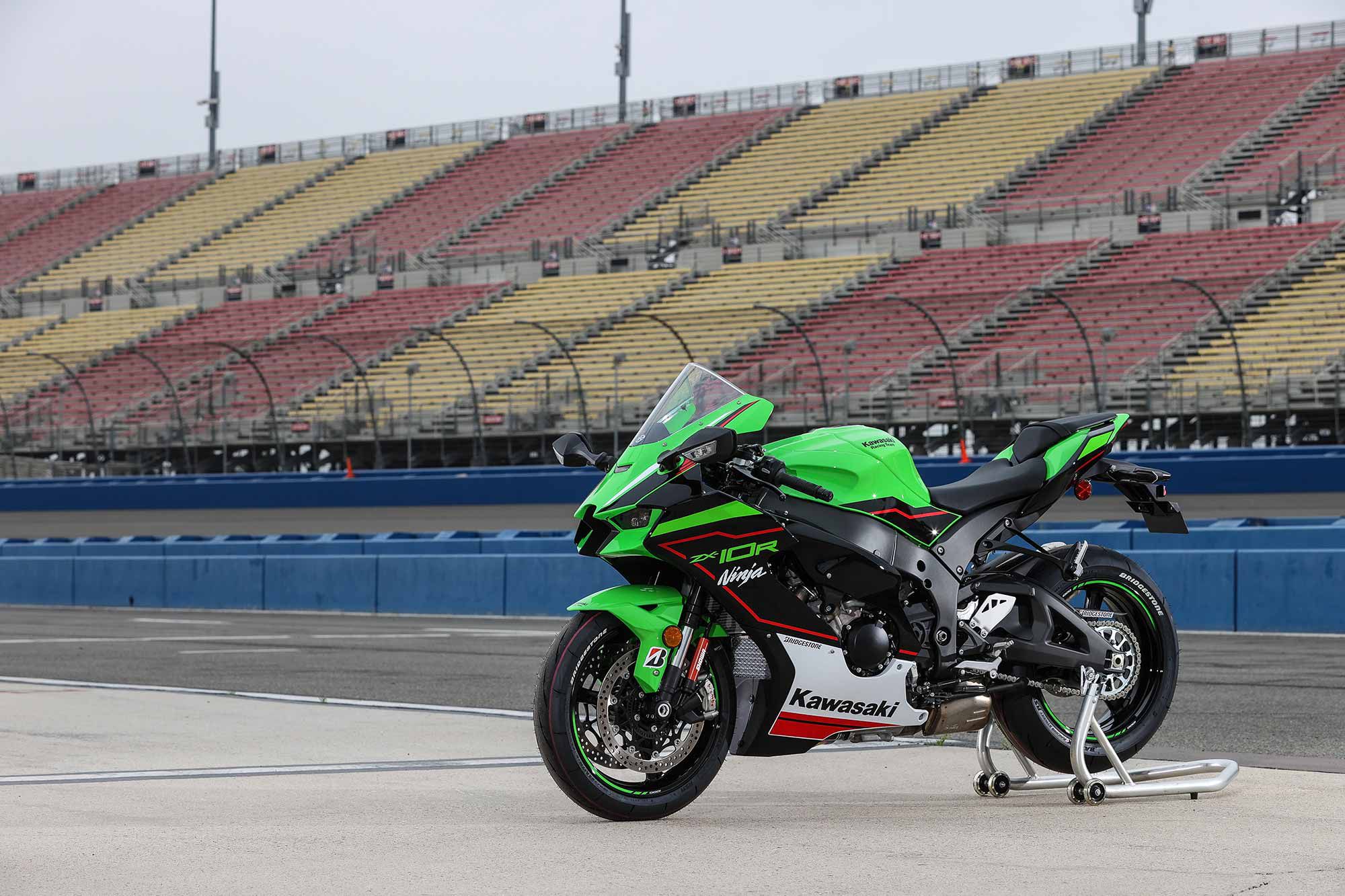
The 2021 Kawasaki Ninja ZX-10R is at the forefront of superbike technology, as its six-consecutive World Superbike championships titles prove. But in an effort to evolve and make the Ninja easier to ride fast for all consumers, Team Green provided the 2021 model a list of evolutional updates.
In this episode of MC Commute, we sample the 2021 Kawasaki Ninja ZX-10R at Southern California’s Auto Club Speedway as part of its official US press introduction. The technical 2.4-mile, 21-turn layout offered a chance to put every aspect of the Ninja to the test via a blend of high-speed straightaways, challenging braking zones, and quick side-to-side transitions. Bridgestone Battlax V02 racing slicks were fitted to the Ninja, signaling Team Green’s intent.
Gear Box
Helmet: Shoei RF-SR
Suit: Alpinestars Missile Tech-Air
Gloves: Alpinestars GP Plus R
Boots: Alpinestars Supertech R
2021 Kawasaki Ninja ZX-10R Technical Specifications and Price
| MSRP: | $16,699 (non-ABS)/$17,699 (ABS) |
| Engine: | DOHC, liquid-cooled inline-four; 4-valves/cyl. |
| Displacement: | 998cc |
| Bore x Stroke: | 76.0 x 55.0mm |
| Compression Ratio: | 13.0:1 |
| Transmission/Final Drive: | 6-speed/chain |
| Fuel System: | DFI w/ 47mm throttle bodies |
| Clutch: | Wet, multiplate |
| Frame: | Aluminum perimeter |
| Front Suspension: | 43mm Showa Balance Free Fork, spring preload, compression, and rebound damping adjustable; 4.7 in. travel |
| Rear Suspension: | Showa Balance Free shock, spring preload, compression, and rebound damping adjustable; 4.5 in. travel |
| Front Brake: | Brembo M50 4-piston, radial-mount calipers, 330mm discs |
| Rear Brake: | 1-piston caliper, 220mm disc |
| Tires, Front/Rear: | 120/70-17 / 190/55-17 |
| Rake/Trail: | 25.0°/4.1 in. |
| Wheelbase: | 57.1 in. |
| Ground Clearance: | 5.3 in. |
| Seat Height: | 32.9 in. |
| Fuel Capacity: | 4.5 gal. |
| Claimed Wet Weight: | 456 lb. |
| Availability: | Now |
| Contact: | kawasaki.com |
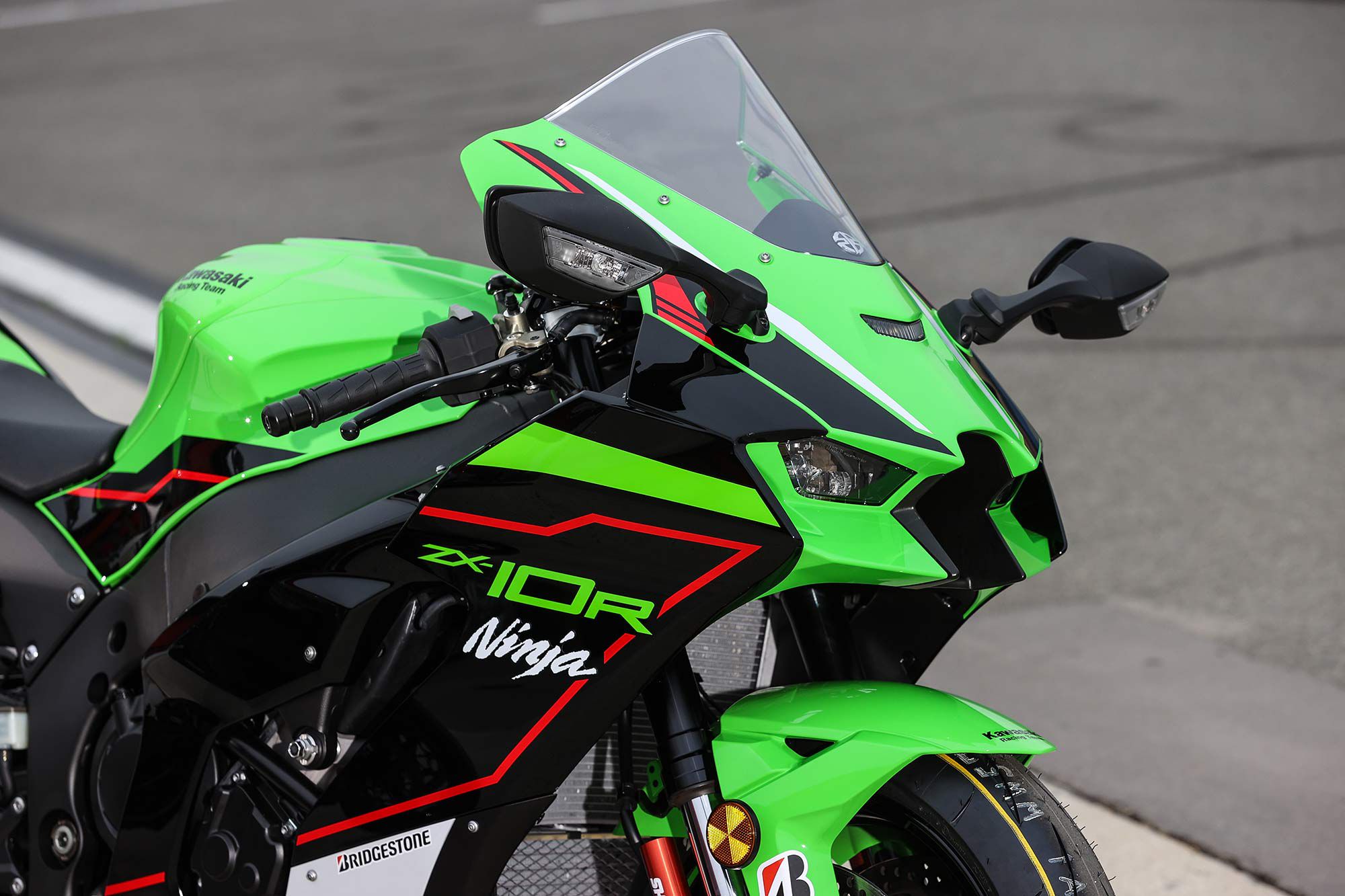
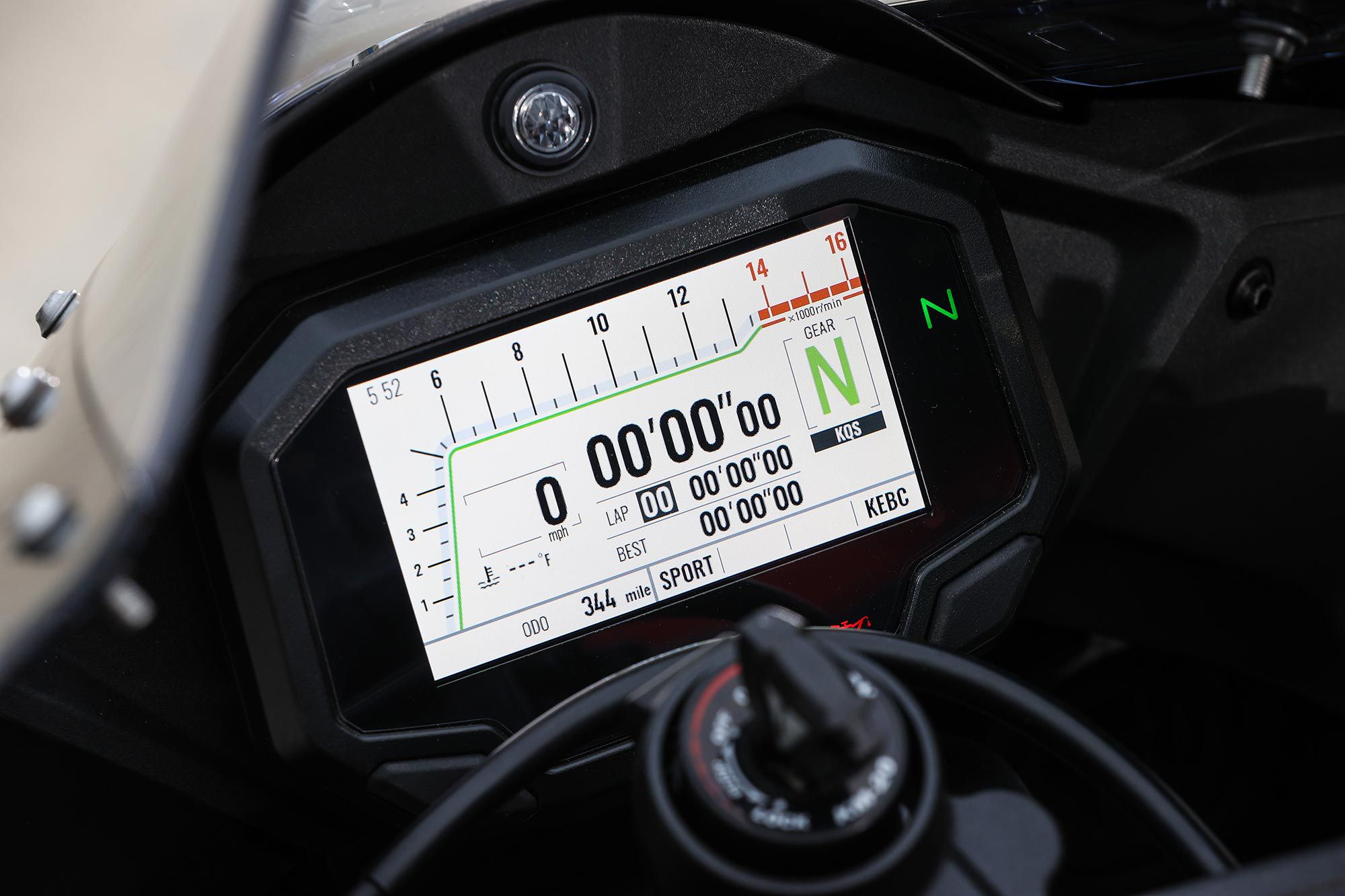
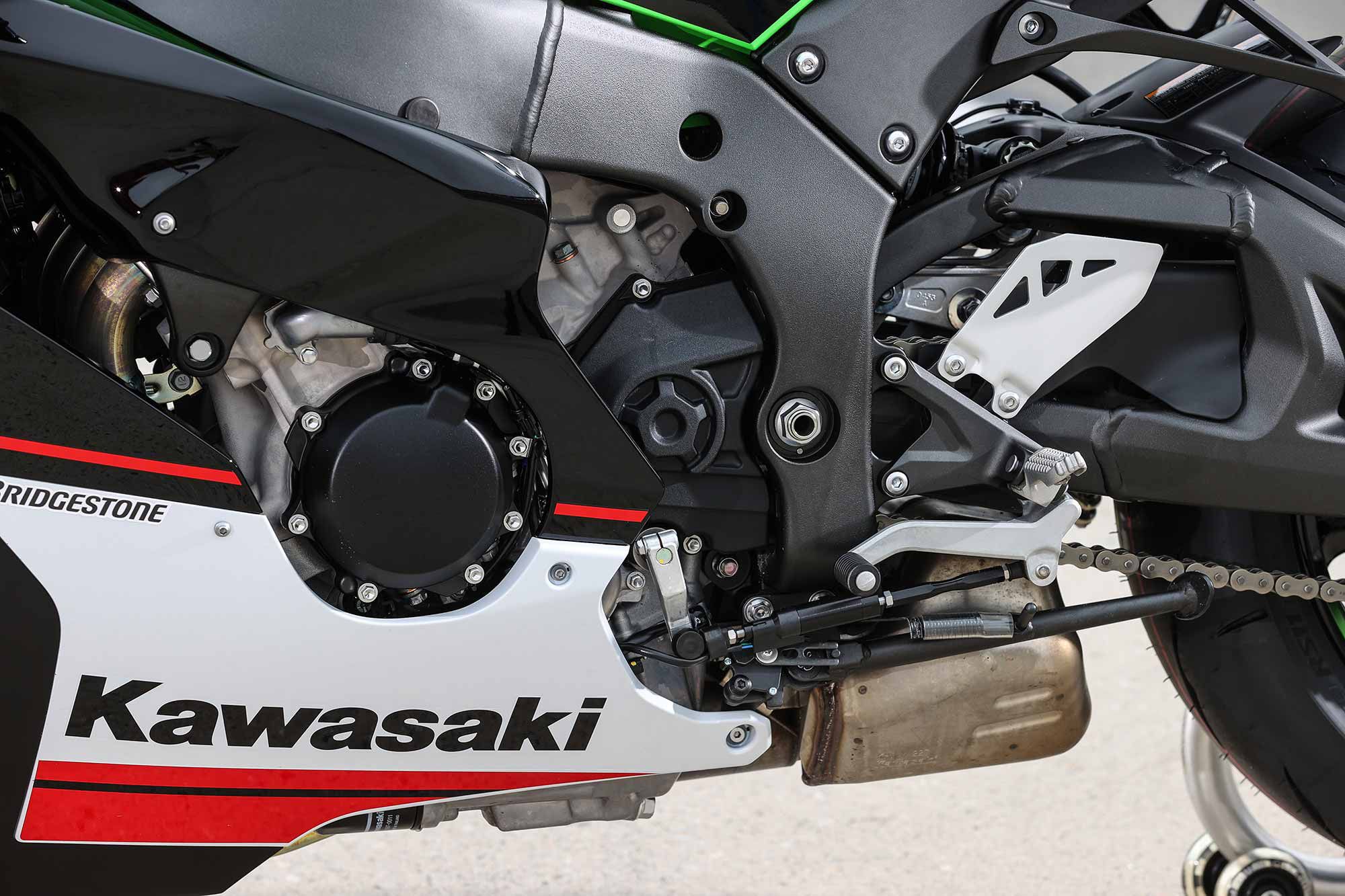
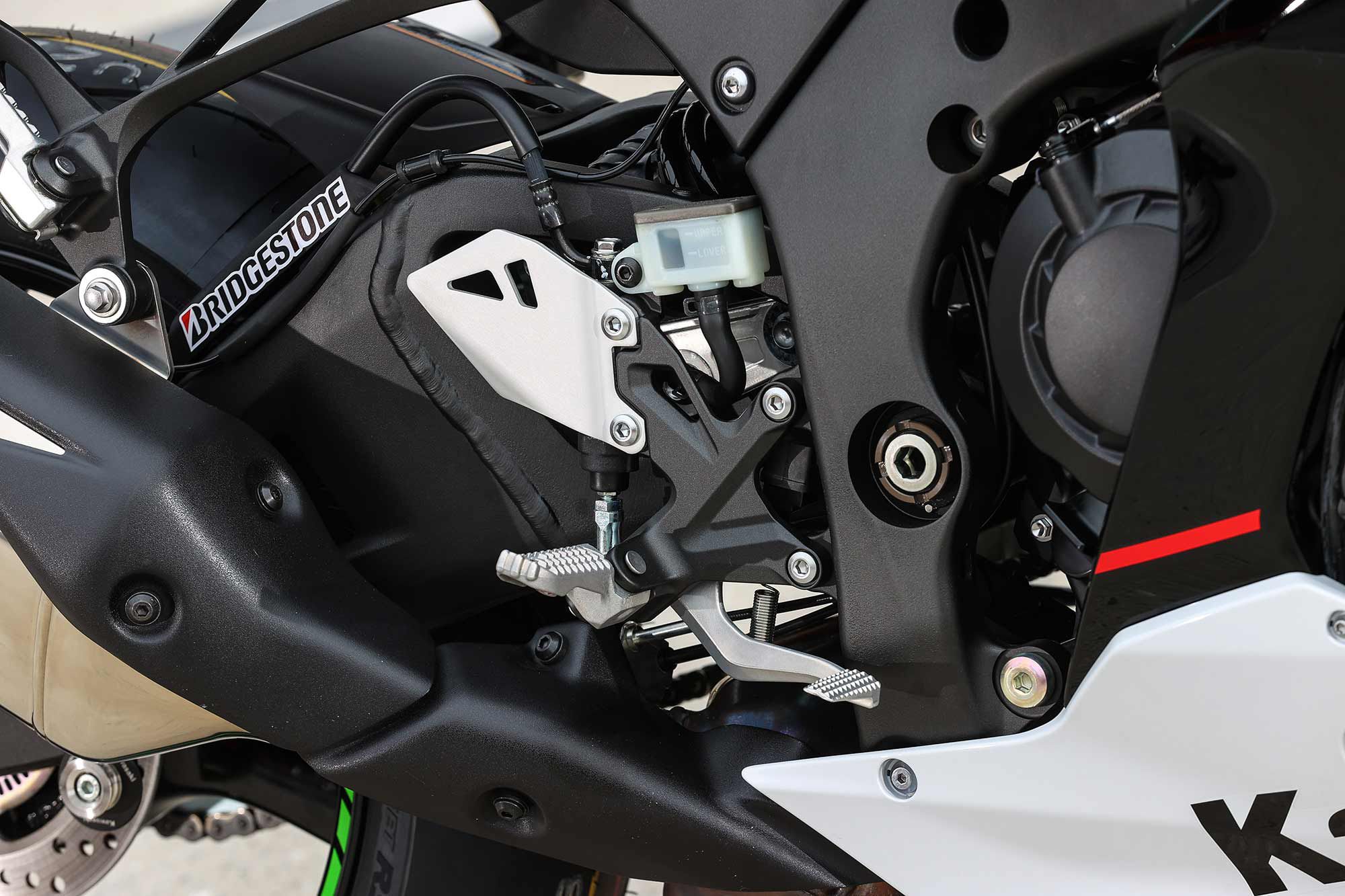
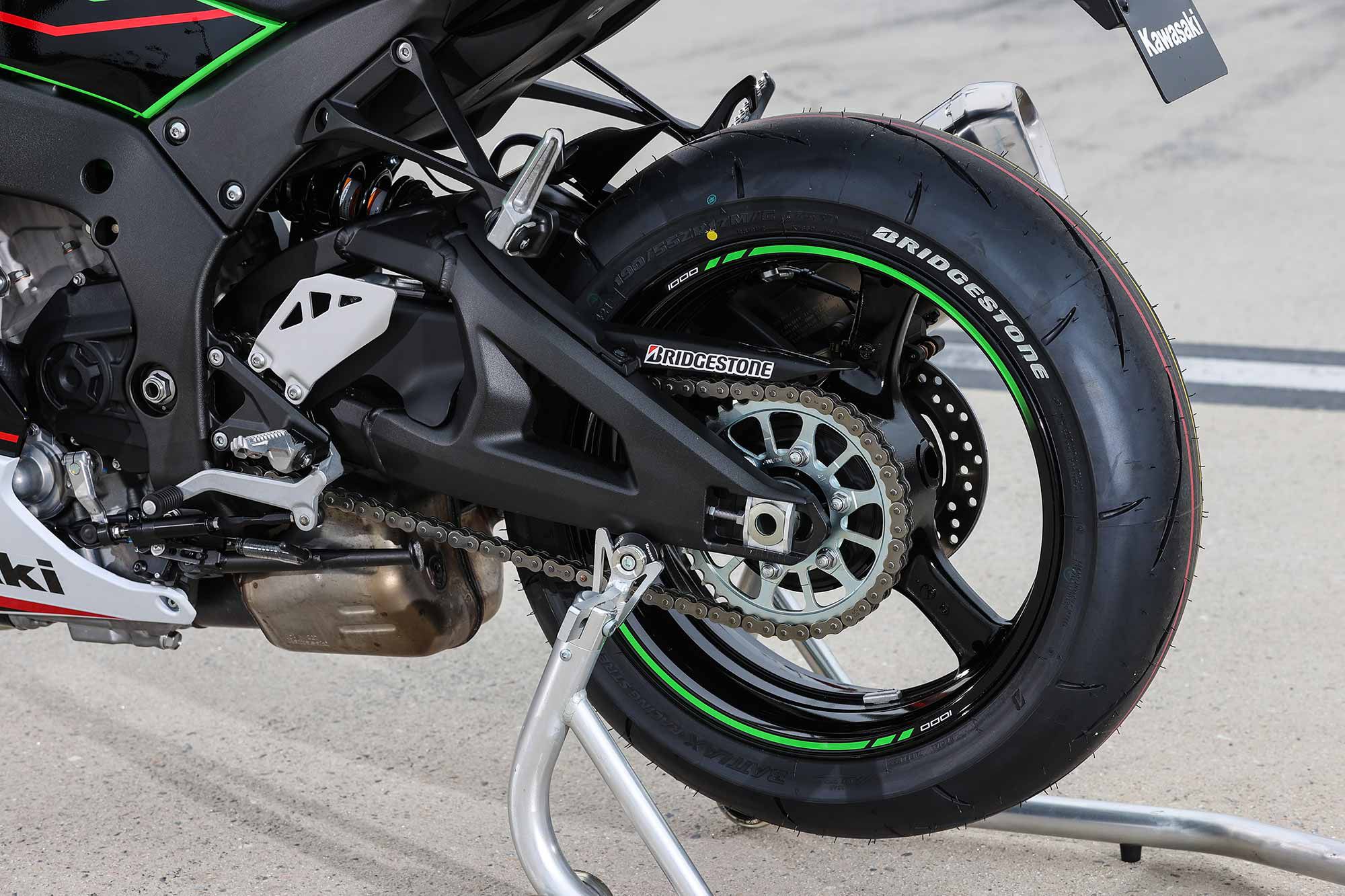
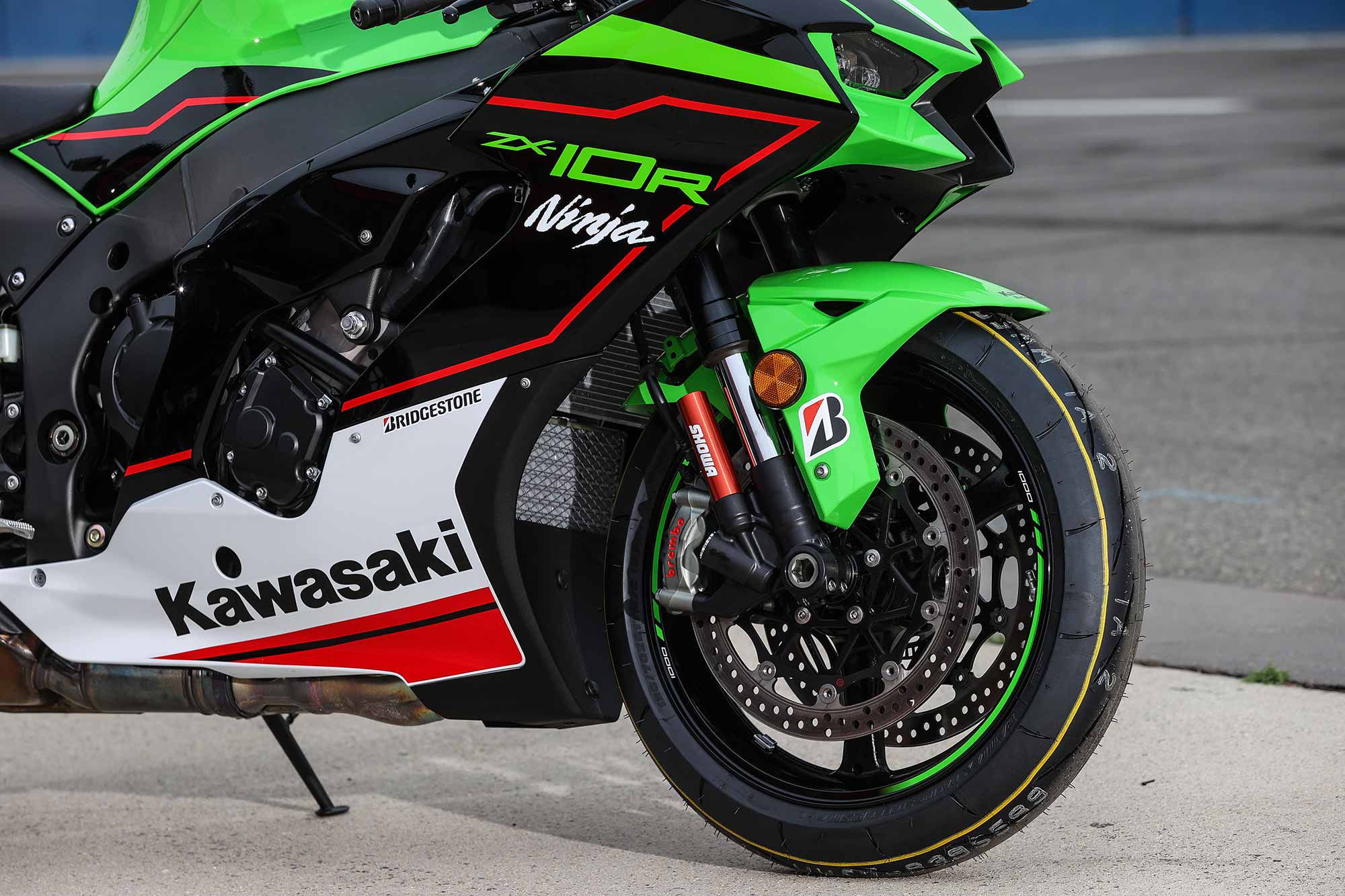
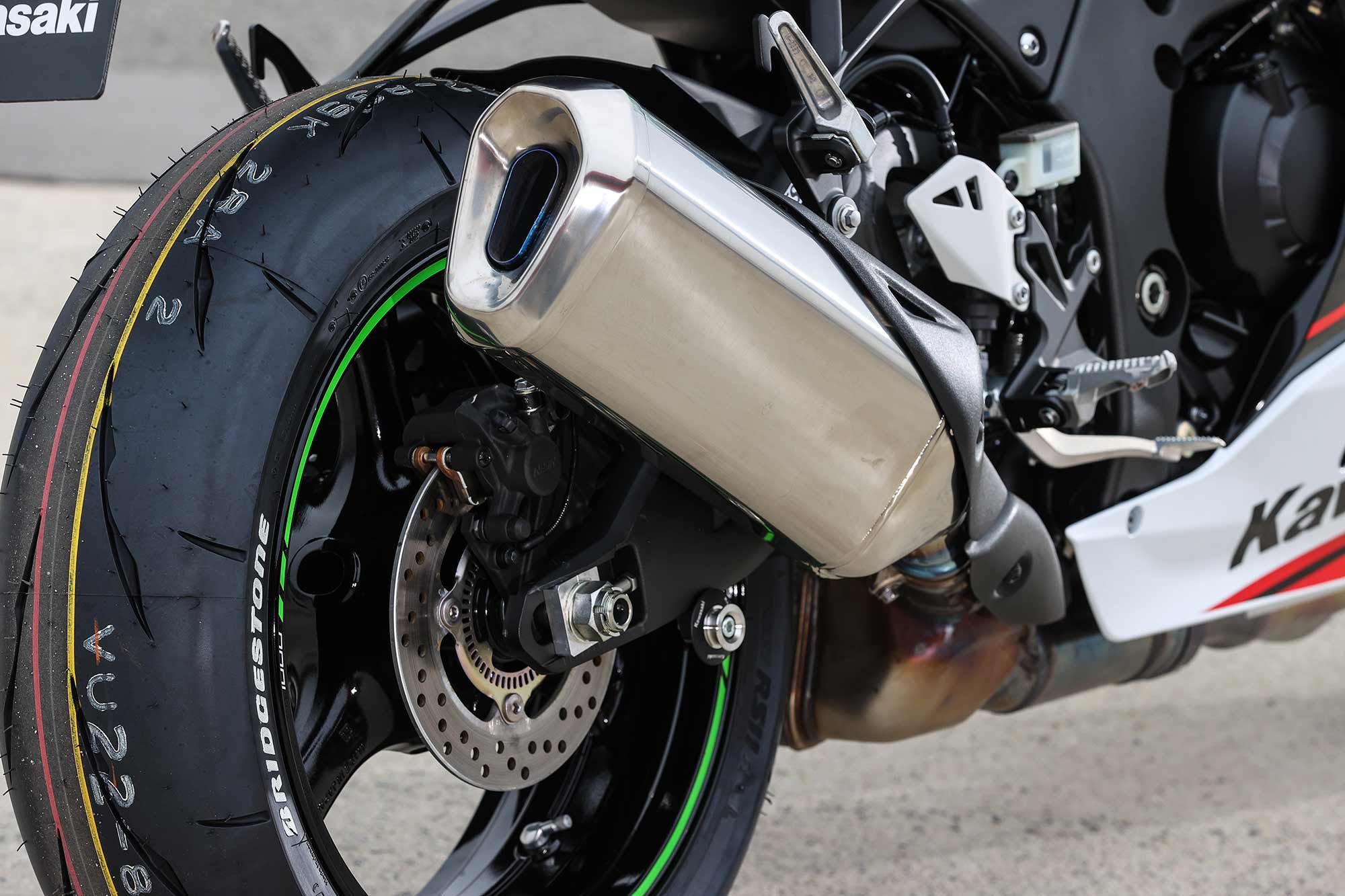
Source: MotorCyclistOnline.com
